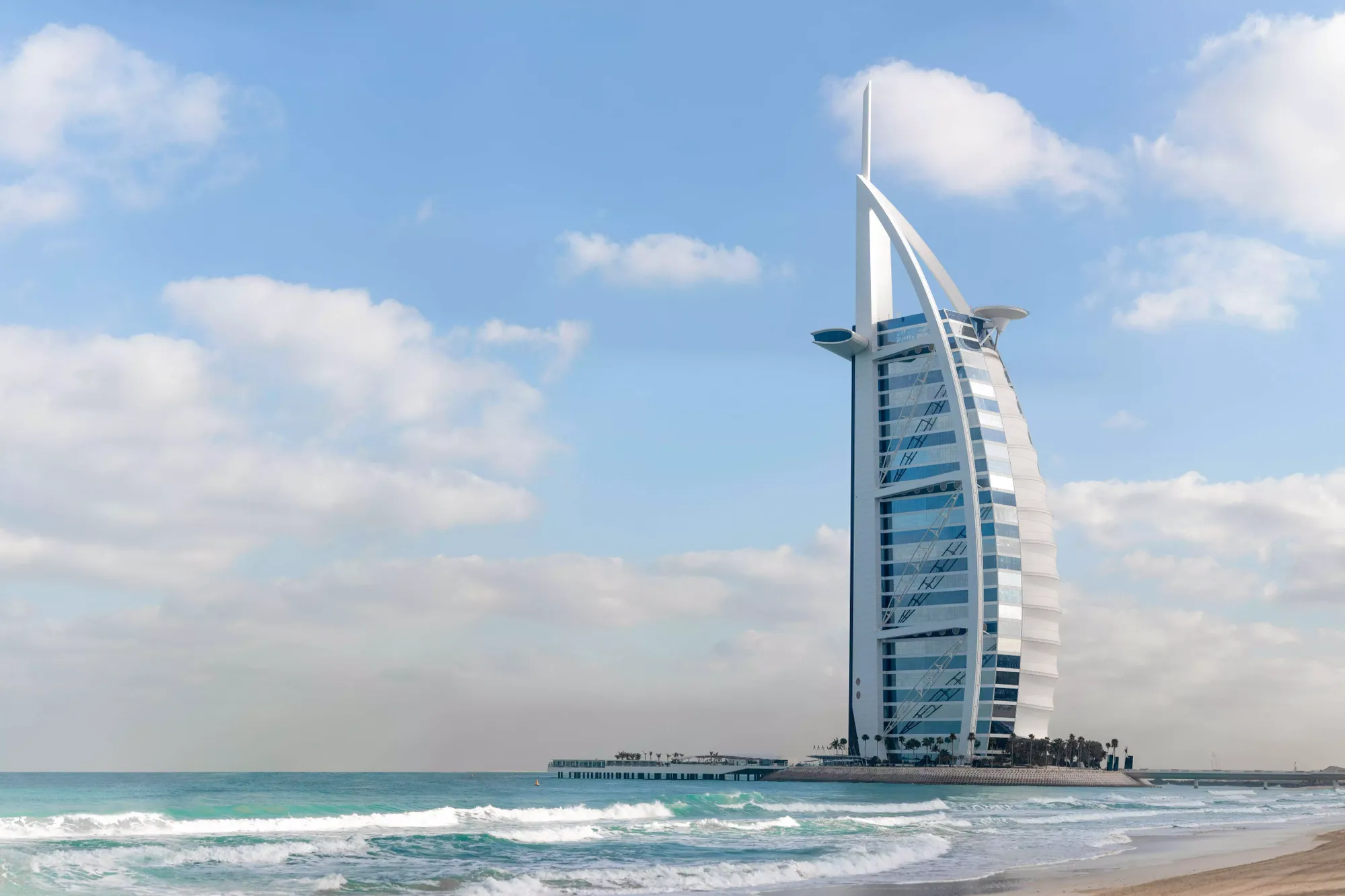Land Reclamation: Meaning, Types & Environmental Impacts
What do some of the big cities in the Middle East all have in common? Big metropolises such as Dubai and Abu Dhabi have grown and seen exponential development, despite the arid climatic conditions and general lack of arable land. Construction on reclaimed land in Dubai is the reason it has its uniquely shaped islands. This includes the island on which its most famous landmark, the Burj Al Arab hotel, stands. But what exactly is reclaimed land? If reclaiming land to create more space, for both housing and industry is a possibility, then why aren't more countries doing it?
This is because land reclamation is extremely resource-intensive, and if not done right, it can have long-term negative consequences on the topography and marine ecological coastal system.

What is Reclaimed Land?
Land reclamation is the process of artificially creating new land. This is done either by draining out muddy areas or by filling up existing water bodies such as oceans, seas and riverbeds. The new land created as a result of this is called reclaimed land, reclaimed ground or landfill.
Why is Land Reclaimed?
The purpose of land reclamation is to create new land for housing, agriculture and industry. Reclaimed land is most commonly found in coastal cities to increase housing capacity and build ports. In more arid regions, unusable land is reclaimed to promote local agriculture and improve irrigation.
Methods and Types of Land Reclamation
The method employed for land reclamation differs depending on the surrounding topography, resource availability and local law.
- Infilling: Infilling is the most commonly used method of land reclamation. It involves filling the reclaimed area with large quantities of dry rock and soil.
- Land dredging: In this method, sediments and debris are removed from the water bed to remove the natural sedimentation that occurs and accumulates over time in artificially created harbors.
- Draining: Artificial draining is a method that is commonplace when reclaiming land from submerged wetlands. This is usually done for agricultural purposes because the soil is nutrient-rich and fertile. In the Netherlands, the process of pumping water out of marshes is known as pondering.
- Reclamation of arid land by irrigation: to reclaim land in arid and semi-arid regions, pumping systems are set up to bring water to the dry land to make it more fertile. This is usually done for agriculture and examples of this can be found in the deserts of the Middle East and the Columbia Basin.
Examples of Land Reclamation
The business district of Cebu City in the Philippines, Most of the coastline of the bustling Indian city of Mumbai, the Barceloneta area in Barcelona, Spain and Battery Park City in Manhattan, New York are all prominent examples of reclaimed land.
What we know today as the city of Mumbai, was formerly a group of seven islands that by 1845 has been fused into one giant landmass by the process of land reclamation.
The city of Dubai in the UAE has several examples of modern-day land reclamation projects. The Palm Islands comprise three artificial islands built on reclaimed land - Palm Jumeirah, Deira Island and Palm Jebel Ali. The construction of these islands was extremely resource-intensive and drew criticism from several environmental agencies for being destructive to the surrounding coral ecosystem.

Examples of land reclamation projects are also seen in coastal cities to facilitate the building of seaports and airports. The first major modern-day land reclamation project was in the 1970s in the city of Rotterdam in the Netherlands where the port was extended by reclaiming the sea around the city. Since then, the Dutch government has consistently expanded the port by extracting large quantities of sand from the seabed and dumping it close to the coastline, destroying marine habitats in the process.
In Singapore, the first land reclamation project was carried out in 1822. Singapore's small size and geographical bounds pose a limit to expansion. Through the 19th century, and even to this day, the only possible alternative to supporting the increasing Singaporean population has been to reclaim land from the sea.
Singapore's humble origins as a fisherman's village meant that the city was a swamp covered by a complex mangrove ecosystem. However, after the land reclamation projects, the Mangrove cover in Singapore was reduced by 95%, thus also reducing the many environmental benefits they provide such as reducing air pollution and preventing soil erosion.
Manhattan's Battery Park City is another example of housing built on top of reclaimed land. The land was reclaimed from the Hudson River by using rocks and soil that were excavated during the construction of the World Trade Center.
Land reclamation is also commonplace in building landing strips for airports on smaller islands. Landing strips require long runways which are not always possible in popular island cities due to geographical constraints. As a result, the coastline has to be altered as is seen in the cases of the airports in Gibraltar, Male (the capital city of Maldives) and Bali, Indonesia. Singapore's Changi airport is another example of a port built on reclaimed land and has been built on top of over 40 million cubic meters of sand reclaimed from the seabed.
Large parts of Panama City are built on top of reclaimed land due to the fast-growing economy that has resulted in a need for housing and commercial properties.
Environmental Impact of Land Reclamation
The process of land reclamation is inherently detrimental to the natural habitats because it can change the natural coastline and alters the waterbed. Aside from the creation of new land, there also is the question of where the fill material is sourced from. Gathering the rocks and the soil to fill up the target area could mean the destruction of existing landmasses.
If not done carefully, land reclamation can lead to long-term problems such as soil erosion and increase the risk of floods. This is why projects need to be planned to bear in mind the wider impact on the natural environment. Alongside long-term issues, there can be some short-term disruptions such as negative impacts on the air and water quality which can make it difficult for flora and fauna to survive.
Environmental impact can vary depending on the method employed, and the source and target of the land reclamation project.
For example, in Singapore, the extensive loss of coral has been directly attributed to land reclamation projects. The habitat destruction has lead to the mass killing of fish, increased surface water temperature and an increased occurrence of harmful algal bloom.
In the Netherlands, the Maasvlakte 2 reclamation project led to the permanent loss of natural habitats. Other harmful impacts included changes in coastal currents, increase air pollution due to an increase in NO2, SO2 and other particulate matter. Other than the environmental impacts, it also lead to a reduction in fishing grounds available to local fisherman.
Despite the obvious negative impacts that land reclamation can have on the environment, many countries continue to expand along the coast as well as inland to add more area to their territories.
In 2000, 17% of the land in the Netherlands was reclaimed and this number has only grown since. Macau has increased its size by almost 200% by building on reclaimed land, and in Singapore, the number stands at around 20% of the initial area of the tiny country. Further projects have been planned to increase the size even further.
Needless to say, governments need to wake up to the extremely harmful negative impact that these practices can have on the surrounding environment and topography. While supporting the economy and building housing for people are essential for the development of a nation, they must be done bearing in mind in a planned and controlled manner to ensure that we are in harmony with the nature around us.
